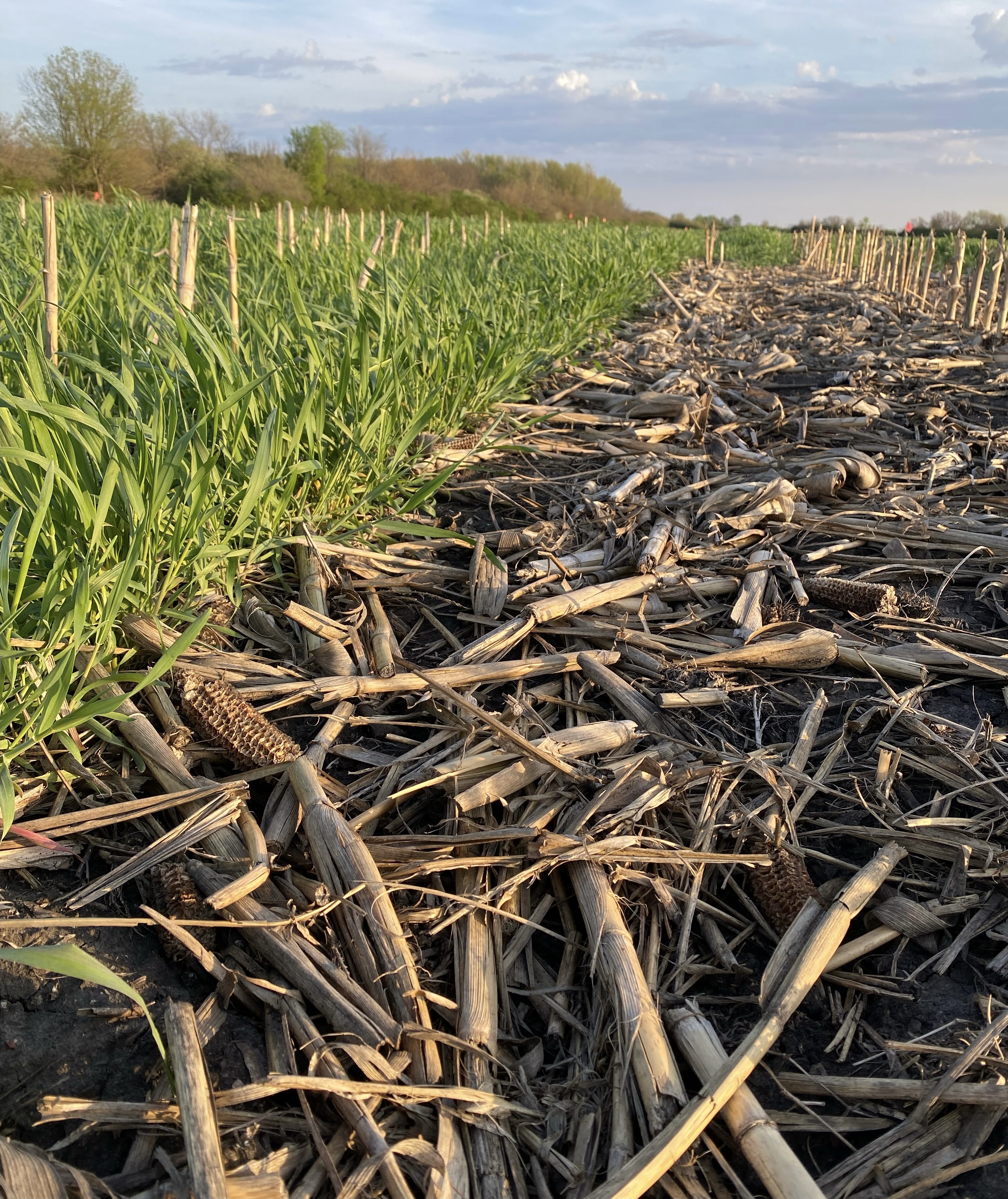–News Direct–
Trials focus on benefits of biologicals for post-harvest stubble control
First-year results unveiled October 30 at international agronomy sciences meeting
DPH Biologicals and the University of Illinois Urbana-Champaign (UIUC) announced today a research collaboration validating the impact biologicals make to accelerate decomposition of crop residue, thereby unlocking the adoption of more sustainable and profitable farming practices for United States high-yield, broadacre growers.
Starting in spring of 2023, the UIUC Crop Physiology Lab run by Fred Below, Ph.D. and Connor Sible, Ph.D., began researching the impact of microbial solutions in crop residue management including the use of TerraTrove Residuce, technology developed by DPH Bio. Residuce is a biodigester, a biological specifically formulated to accelerate the process of plant tissue degradation.
Supporting Dr. Belows lab is an opportunity to ground-truth the benefits of biodigesters, understand how technologies like Residuce can enable more sustainable and profitable cropping practices and to develop best practice use recommendations supporting our retail and channel partners with high-value, science-verified cropping solutions, said Alex Cochran, Ph.D., DPH Bios Chief Technology Officer.
A subset of biofertilizers, biodigester sales are exploding as part of the expanding global biofertility market, projected to reach $3.75 billion USD in sales by 2030, a CAGR of 12.80%, underpinned by market demand for more sustainably-grown food with farmers need to offset increasing costs and shrinking profit margins. Residuce, available in a liquid and dry formulation, is currently used on 1.5 million North American acres, a 50% growth rate in the past year.
Already, early UIUC trial results indicate improved yields when biodigesters were used with cover crop plantings. Cover crops are typically associated with lower yields, a correlation that has discouraged grower adoption despite the well-known soil health benefits of cover cropping.

Using Residuce on an unmanaged cereal rye cover crop partially eliminated the nearly nine-bushel yield penalty average experienced when a cover crop is planted between no-till corn and soybean rotations, according to research presented Monday by UIUC graduate student Darby Danzl at the 2023 ASA, CSSA, SSSA International Annual Meeting, held jointly by the American Society of Agronomy, the Crop Science Society of America and the Soil Science Society of America. The yield penalty was nearly fully eliminated when a fertilizer source was combined with Residuce.
Research Focuses on Value-Creation of Biodigesters for Corn, Soybean and Wheat Production
With UIUC already a research leader in residue management strategies in broadacre cropping systems, the ongoing field trial collaborations with DPH Bio will focus on further defining the value biodigesters bring to unlocking the value of residue for sustainable agriculture.
DPH Bio recently published Rethinking Crop Residue Management with Biodigesters, an analysis of research into crop residue management, includes work already completed by the UIUC crop physiology lab as well as DPH Bios field trial results. The UIUC-DPH partnership will expand upon the research and benefits of biodigesters presented in the white paper.
Large volumes of crop residue create problems, Sible said, with high-yielding cultivars and practices like no-till, double-cropping and cover cropping generating more residue than growers have ever experienced. Todays average 180-bushel corn crop yields 3.9 tons per acre of corn stover and every additional bushel in yield contributes another 43.7 pounds of stover, according to UIUC research.
Growers complain of delayed germination, poor plant stands, nutrients locked up in the decomposing process, increased disease and pest outbreaks from pathogens that overwinter in thick residue layers and yield penalties associated with residue accumulation.
Yet, once broken down, residue is an untapped source of nutrients and better soil and crop health. Strategies for accelerating residue degradation are key, Below said.
Residue is natures biological. Its so good for the soil and the plant, and there's a lot of nutrition there. But residue can be your best friend or your worst nightmare, Below said. The quicker you can degrade residue, the easier you can plant, the more uniform your crop is going to emerge and the more likely youre going to get the benefits of that residue.
The next round of joint UIUC-DPH Bio trials will focus on:
The benefits of biodigesters for cover crop management in no-till corn and soybean.
Fall versus spring residue management with biodigesters to benefit continuous corn yield.
Biodigesters value to residue management in a wheat-soybean double crop rotation.
Studies conducted in 2023 will be available this winter. The second round of trial results will be available before the 2025 planting season.
About DPH Biologicals
DPH Biologicals aims to be the industrys most trusted biologicals provider. We attract, develop and scale technologies improving broad market access and simplifying the grower experience with biologicals. With more than three decades invested into scientific research, field-testing, partner relationships and product development, weve built three proven product platforms BellaTrove for biocontrols; TerraTrove for biofertility and biodigesters; and RegenAphex, a regenerative, plant-based humus extract that serves as a foundation for our flagship biofertilizer SP-1 Classic and a platform for third-party technological development. For more information, visit www.dphbio.com.
Contact Details
AgTech PR for DPH Bio
Georgie Smith
Company Website
View source version on newsdirect.com: https://newsdirect.com/news/dph-biologicals-university-of-illinois-team-up-to-improve-crop-residue-management-940247172
DPH Biologicals
COMTEX_442773626/2655/2023-11-01T09:52:58
Julian Lopez is professor emeritus of finance, served as the founding academic affairs dean and founding chair of the finance department.
Disclaimer: The views, suggestions, and opinions expressed here are the sole responsibility of the experts. No journalist was involved in the writing and production of this article.
